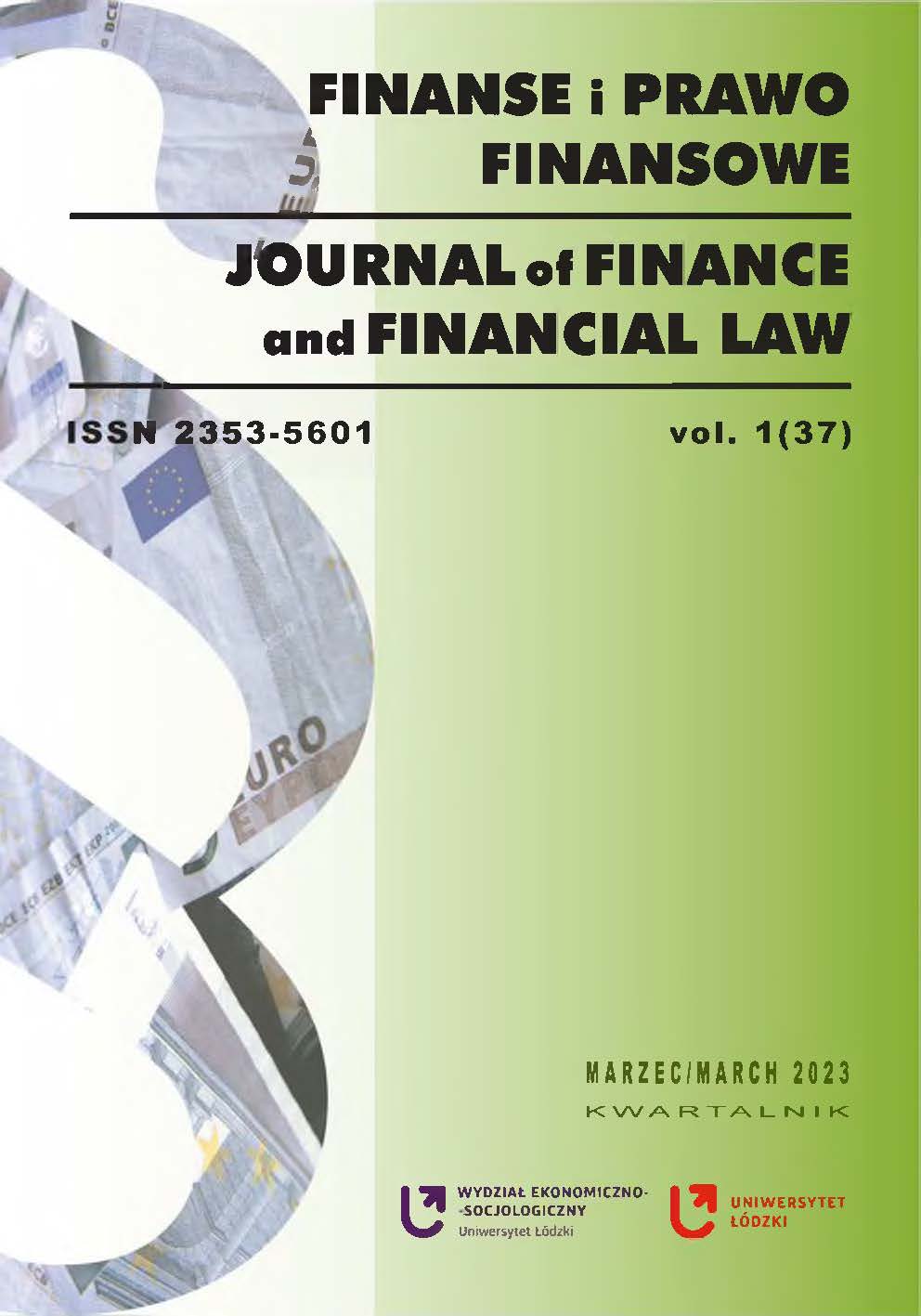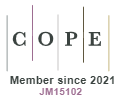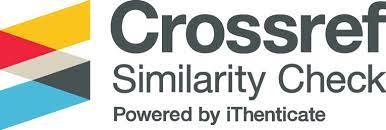The Impact of COVID-19 Cases on Stock Prices of Selected Companies Representing Tourism and Banking Sectors
DOI:
https://doi.org/10.18778/2391-6478.1.37.01Keywords:
Covid-19, Coronavirus, Stock Prices, EU Countries, ARDLAbstract
The purpose of the article/hypothesis: The purpose of the article is to analyse the relationship between stock prices of selected companies and COVID-19 cases in those countries where the tourism and banking sectors have a high share of national income, such as Croatia, Italy and Spain.
Methodology: The methods used are Breakpoint Unit Root Tests to determine whether a time series is stationary or not, and ARDL cointegration technique for cointegration testing.
Results of the research: It was found that the number of COVID-19 cases negatively impacted the tourism and banking market in surveyed EU countries.
Downloads
References
Acikgoz O. and Gunay A. (2020), The Early Impact of The COVID-19 Pandemic on the Global and Turkish Economy, Turkish Journal of Medical Sciences, 50(SI-1), pp. 520–526.
Google Scholar
DOI: https://doi.org/10.3906/sag-2004-6
Al‐Mughairi M. S. H., Bhaskar, P., Khalfan Hamood Alazri, A. (2021), The economic and social impact of COVID‐19 on tourism and hospitality industry: A case study from Oman, Journal of Public Affairs, pp. 1–11.
Google Scholar
Altay H. & Yilmaz A. (2016), Turkiye'de Ihracat Artislarinin Istihdam Uzerindeki Etkisinin Incelenmesi, Finans Politik ve Ekonomik Yorumlar Dergisi, pp. 75–86.
Google Scholar
Bai J. and Perron P. (1998), Estimating and Testing Linear Models with Multiple Structural Changes, Econometrica, 66(1), pp. 47–78.
Google Scholar
DOI: https://doi.org/10.2307/2998540
Belloumi M. (2014), The Relationship Between Trade, FDI and Economic Growth in Tunisia: An application of the autoregressive distributed lag model, Economic Systems, 38(2), pp. 269-287.
Google Scholar
DOI: https://doi.org/10.1016/j.ecosys.2013.09.002
Beyer R. C., Franco-Bedoya S. Galdo V. (2021), Examining the Economic Impact Of COVID-19 in India Through Daily Electricity Consumption and Night Time Light Intensity, World Development, pp. 1–13.
Google Scholar
DOI: https://doi.org/10.1596/1813-9450-9291
Brown R. L., Durbin J., Evans J. M. (1975), Techniques for Testing the Constancy of Regression Relationships Over Time, Journal of the Royal Statistical Society, pp. 149-192.
Google Scholar
DOI: https://doi.org/10.1111/j.2517-6161.1975.tb01532.x
Carrion-i-Silvestre J. L., Kim D., Perron P. (2009), GLS-Based Unit Root Tests with Multiple Structural Breaks Under Both the Null and the Alternative Hypotheses, Econometric Theory, pp. 1754–1792.
Google Scholar
DOI: https://doi.org/10.1017/S0266466609990326
Carter D., Mazumder S., Simkins, B., Sisneros E. (2022), The Stock Price Reaction of The COVID-19 Pandemic On The Airline, Hotel, And Tourism Industries, Finance Research Letters, pp. 1–15.
Google Scholar
DOI: https://doi.org/10.2139/ssrn.3838925
De la Fuente A. (2021), The Economic Consequences of COVID in Spain and How to Deal With Them, Applied Economic Analysis, pp. 90–104.
Google Scholar
DOI: https://doi.org/10.1108/AEA-11-2020-0158
Duasa J. (2007), Determinants of Malaysian Trade Balance: An ARDL Bound Testing Approach, Global Economic Review, 36(1), pp. 89-102.
Google Scholar
DOI: https://doi.org/10.1080/12265080701217405
Erdogan S. and Dayan V. (2019), Analysis of Relationship Between International Interest Rates and Cryptocurrency Prices: Case for Bitcoin and LIBOR, Blockchain Economics and Financial Market Innovation. Financial Innovations in the Digital Age. Editor: Umit Hacioglu, Springer, Switzerland.
Google Scholar
DOI: https://doi.org/10.1007/978-3-030-25275-5_24
Erdogan S. & Tatar H. E. (2021), Turkiye’de Uluslararasi Portföy Yatirimlarinin Icsel Faktorleri Uzerine Ardl Analizi. Uluslararasi Ekonomi ve Siyaset Bilimleri Akademik Arastirmalar Dergisi, 5(12), pp. 1–17.
Google Scholar
Fezzi C. and Fanghella V. (2020), Real-time Estimation of The Short-Run Impact of COVID-19 on Economic Activity Using Electricity Market Data, Environmental and Resource Economics, 76(4), pp. 885–900.
Google Scholar
DOI: https://doi.org/10.1007/s10640-020-00467-4
Ganie I. R., Wani T. A., Yadav M. P. (2022), Impact Of COVID-19 Outbreak on the Stock Market: An Evidence From Select Economies, Business Perspectives and Research, pp. 1–15.
Google Scholar
DOI: https://doi.org/10.1177/22785337211073635
Gormsen N. J. and Koijen R. S. (2020), Coronavirus: Impact on Stock Prices and Growth Expectations, The Review of Asset Pricing Studies, 10(4), pp. 574–597.
Google Scholar
DOI: https://doi.org/10.1093/rapstu/raaa013
Goswami B., Mandal R., Nath H. K. (2021), COVID-19 Pandemic and Economic Performances of the States in India, Economic Analysis and Policy, pp. 461–479.
Google Scholar
DOI: https://doi.org/10.1016/j.eap.2021.01.001
Haacker M. (2004), The impact of HIV/AIDS on Government Finance and Public Services, The Macroeconomics of HIV/AIDS.
Google Scholar
Harris R. and Sollis R. (2003), Applied Time Series Modelling And Forecasting, Wiley.
Google Scholar
Henseler M., Maisonnave H., Maskaeva A. (2022), Economic impacts of COVID-19 on the tourism sector in Tanzania, Annals of Tourism Research Empirical Insights, pp. 1–12.
Google Scholar
DOI: https://doi.org/10.1016/j.annale.2022.100042
Hyndman R.J. and Athanasopoulos G. (2018), Forecasting: Principles and Practice, 2nd Edition, Otexts.
Google Scholar
IFC (2021), The Early Impact of COVID-19 on Financial Institutions, International Financial Corporation.
Google Scholar
Just M. and Echaust, K. (2021), Stock Market Returns, Volatility, Correlation and Liquidity During the COVID-19 Crisis: Evidence from the Markov switching approach, Finance Research Letters, pp. 1–8
Google Scholar
DOI: https://doi.org/10.1016/j.frl.2020.101775
Kapetanios G. (2005), Unit-Root Testing Against the Alternative Hypothesis of up to M Structural Breaks, Journal of Time Series Analysis, 26(1), pp. 123–133.
Google Scholar
DOI: https://doi.org/10.1111/j.1467-9892.2005.00393.x
Kordestani A., Pashkevich, N., Oghazi, P., Sahamkhadam, M., Sohrabpour, V. (2022), Effects Of The COVID-19 Pandemic on Stock Price Performance Of Blockchain-Based Companies, Economic Research-Ekonomska Istraživanja, 35(1), pp. 3206–3224.
Google Scholar
DOI: https://doi.org/10.1080/1331677X.2021.1986676
Korinth B. (2022), Impact Of The COVID-19 Pandemic On International Tourism Income In Tourism Receiving Countries, Sustainability, pp. 1–12.
Google Scholar
DOI: https://doi.org/10.3390/su141912550
Lasaulce S., Zhang C., Varma V., Morărescz I. C. (2021), Analysis Of The Tradeoff Between Health and Economic Impacts of the COVID-19 Epidemic, Frontiers in Public Health, no. 9 pp. 1–13.
Google Scholar
DOI: https://doi.org/10.3389/fpubh.2021.620770
Latorre G. (2020), Standing Firm on Shifting Sands, Global banking M&A Outlook H2 2020, KPMG International.
Google Scholar
Lau L. J.(2020), The Impacts of the Trade War and the COVID-19 Epidemic on China-US Economic Relations, China Review, 20(4), pp. 1–38.
Google Scholar
Lee J., and Strazicich M. C. (2003), Minimum Lagrange Multiplier Unit Root Test with Two Structural Breaks, Review of Economics and Statistics, 85(4), pp, 1082–1089.
Google Scholar
DOI: https://doi.org/10.1162/003465303772815961
Lee J. & Strazicich M. C. (2004), Minimum Lagrange Multiplier Unit Root Test with One Structural Break, Department of Economics Working Papers, no. 04-17.
Google Scholar
Liu Y., Cheng X., Liao S. S., Yang F. (2022), The Impact of COVID-19 on the Tourism and Hospitality Industry: Evidence From International Stock Markets, The North American Journal of Economics and Finance, pp. 1–23.
Google Scholar
DOI: https://doi.org/10.1016/j.najef.2022.101875
Lumsdaine R. L. and Papell D. H. (1997), Multiple Trend Breaks and the Unit-Root Hypothesis, Review of economics and Statistics, 79(2), pp. 212–218.
Google Scholar
DOI: https://doi.org/10.1162/003465397556791
Mele M. and Magazzino C. (2021), Pollution, Economic Growth, And COVID-19 Deaths In India: Machine Learning Evidence, Environmental Science and Pollution Research, 28(3), pp. 2669–2677.
Google Scholar
DOI: https://doi.org/10.1007/s11356-020-10689-0
Ng S. and Perron P. (2001), Lag Length Selection and The Construction of Unit Root Tests with Good Size And Power, Econometrica, 69(6), pp. 1519–1554.
Google Scholar
DOI: https://doi.org/10.1111/1468-0262.00256
Nkoro E. and Uko A. K. (2016), Autoregressive Distributed Lag (ARDL) Cointegration Technique: Application and Interpretation, Journal of Statistical and Econometric Methods, vol. 5(4), pp. 63–91.
Google Scholar
Ogundepo E., Folorunso S., Adekanmbi O., Akinsande O., Banjo O., Ogbuju E., Babajide O. (2020), An Exploratory Assessment of a Multidimensional Healthcare and Economic Data on COVID-19 In Nigeria, Data in Brief, pp. 1–14.
Google Scholar
DOI: https://doi.org/10.1016/j.dib.2020.106424
Paprottka F. J., Rolfes S. B., Richter D. F., Kaye K. O. (2021), COVID-19 Pandemic: Evaluation of Socio-Economic Impact on Aesthetic Plastic Surgery Providers, Aesthetic Plastic Surgery, pp. 1877–1887.
Google Scholar
DOI: https://doi.org/10.1007/s00266-021-02130-9
Pata U. K. (2020), COVID-19 Induced Economic Uncertainty: A Comparison Between the United Kingdom and the United States, Ekonomika, 99(2), pp. 104–115.
Google Scholar
DOI: https://doi.org/10.15388/Ekon.2020.2.7
Perron P. (1989), The Great Crash, the Oil Price Shock, And the Unit Root Hypothesis, Econometrica: Journal of the Econometric Society, pp. 1361-1401.
Google Scholar
DOI: https://doi.org/10.2307/1913712
Perron P. (1997), Further Evidence on Breaking Trend Functions in Macroeconomic Variables, Journal of Econometrics, 80(2), pp. 355–385.
Google Scholar
DOI: https://doi.org/10.1016/S0304-4076(97)00049-3
Pesaran M. H. & Shin Y. (1998), An Autoregressive Distributed-Lag Modelling Approach to Cointegration Analysis, Econometric Society Monographs, pp. 371–413.
Google Scholar
DOI: https://doi.org/10.1017/CBO9781139052221.011
Pesaran M. H., Shin Y., Smith R. J. (2001), Bounds Testing Approaches to the Analysis Of Level Relationships, Journal of Applied Econometrics, 16(3), pp. 289–326.
Google Scholar
DOI: https://doi.org/10.1002/jae.616
Ramelli S. and Wagner A. F. (2020), Feverish Stock Price Reactions to COVID-19, The Review of Corporate Finance Studies, 9(3), pp. 622–655.
Google Scholar
DOI: https://doi.org/10.1093/rcfs/cfaa012
Rasheed R., Rizwan A., Javed H., Sharif F., Zaidi A. (2021), Socio-Economic and Environmental Impacts Of COVID-19 Pandemic in Pakistan an Integrated Analysis, Environmental Science and Pollution Research, 28(16), pp. 19926–19943.
Google Scholar
DOI: https://doi.org/10.1007/s11356-020-12070-7
Shakil M. H., Tasnia M., Saiti B. (2018), Is Gold A Hedge or a Safe Haven? An Application of ARDL Approach, Journal of Economics, Finance and Administrative Science, 23(44), pp. 60-76.
Google Scholar
DOI: https://doi.org/10.1108/JEFAS-03-2017-0052
Shrestha M. B. (2006), ARDL Modelling Approach to Cointegration Test. University of Wollongong, New South Wales, Australia and Nepal Rastra Bank – the Central bank of Nepal.
Google Scholar
UNWTO (2021), Recommendations for the Transition to a Green Travel and Tourism Economy, World Tourism Organization.
Google Scholar
Wang C. H. (2020), A Three-Level Health Inspection Queue Based on Risk Screening Management Mechanism for Post-COVID Global Economic Recovery, IEEE Access, pp. 177604–177614.
Google Scholar
DOI: https://doi.org/10.1109/ACCESS.2020.3026786
Wang Q. and Han X. (2021), Spillover Effects of The United States Economic Slowdown Induced by COVID-19 Pandemic on Energy, Economy, And Environment In Other Countries, Environmental Research, pp. 1–10.
Google Scholar
DOI: https://doi.org/10.1016/j.envres.2021.110936
Wang Q. and Zhang F. (2021), What Does the China's Economic Recovery after COVID-19 Pandemic Mean for The Economic Growth and Energy Consumption of Other Countries?, Journal of Cleaner Production, pp. 1–20.
Google Scholar
DOI: https://doi.org/10.1016/j.jclepro.2021.126265
Yach D., Stuckler D., Brownell K. D. (2006), Epidemiologic and Economic Consequences of The Global Epidemics of Obesity and Diabetes, Nature medicine, 12(1), pp. 62–66.
Google Scholar
DOI: https://doi.org/10.1038/nm0106-62
Yoon Y. H. (2021), The Macroeconomic Implications of The COVID-19 Economic Crisis, Investigación Económica, 80(316), pp. 5–31.
Google Scholar
DOI: https://doi.org/10.22201/fe.01851667p.2021.316.78971
Zivot E. and Andrews D. W. K. (1992), Further Evidence on the Great Crash, the Oil-Price Shock and the Unit-Root Hypothesis, Journal of Business & Economic Statistics, 20(1), pp. 25–44.
Google Scholar
DOI: https://doi.org/10.1198/073500102753410372
(www1) Yahoo Finance – https://finance.yahoo.com/ [Accessed 24.06.2021].
Google Scholar
(www2) Our World in Data – https://ourworldindata.org/coronavirus [Accessed 24.07.2021].
Google Scholar
Downloads
Published
How to Cite
Issue
Section
License

This work is licensed under a Creative Commons Attribution-NonCommercial-NoDerivatives 4.0 International License.














